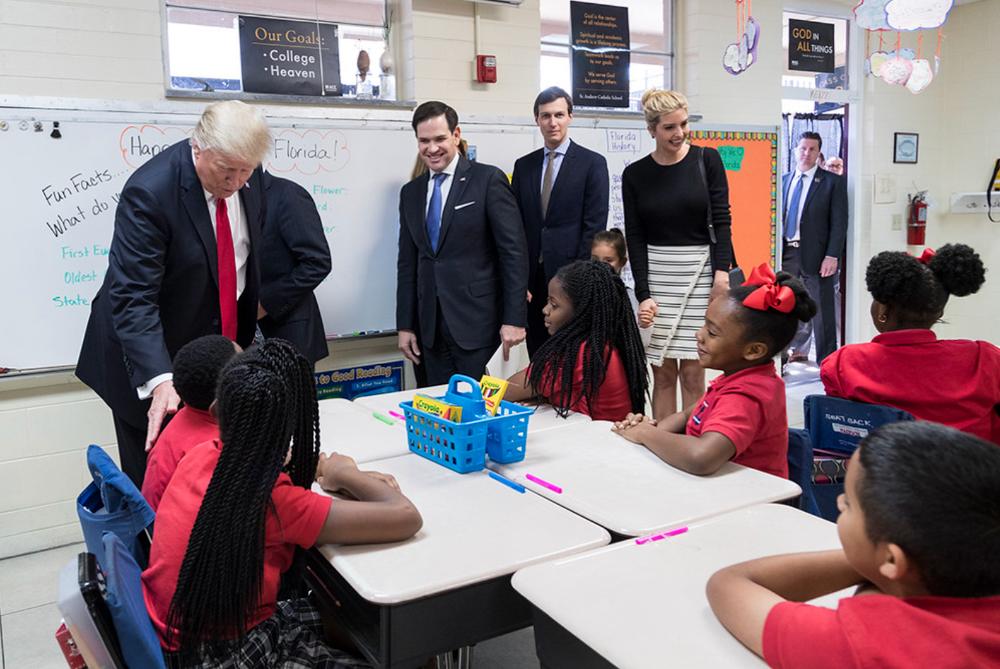In recent weeks, social media has buzzed with claims that President Donald Trump plans to shorten the American school year to just six months. As education systems nationwide adapt to post-pandemic realities, this viral rumor has sparked concern among parents and educators alike. Let’s examine the facts behind this claim and understand who actually controls school calendars in the United States.
What the Executive Order Actually Says
On March 20, 2025, President Trump signed an Executive Order directing the Secretary of Education to “take all necessary steps to facilitate the closure of the Department of Education and return education authority to the States.” The order emphasizes returning control to state and local authorities while maintaining delivery of essential education services.
The White House fact sheet on this order states that it aims at “returning power over education to families” and directing that “programs or activities receiving any remaining Department of Education funds will not advance DEI or gender ideology.”
However, neither the Executive Order nor any related White House documents mention altering the length of the school year. There is no policy proposal to reduce instructional time to six months or any other duration.
Who Controls School Calendars in America?
The determination of school calendars and instructional time has always been primarily a state and local responsibility—not a federal one.
According to data from the Education Commission of the States and Pew Research, most states require approximately 180 days throughout the academic year. The remaining states have varying requirements, with some as low as 160 days and others as high as 186 days, with many allowing districts to choose between meeting minimum days or minimum instructional hours.
Education in America is primarily governed at the state and local levels, with each state—and often each district—setting its own calendar based on various local factors and needs.
Even if the Department of Education were to close as directed in the Executive Order, the authority to set school calendars would remain with states and local school districts, as it has throughout American history.
Federal Limits on Education Authority
Federal law contains provisions that bar federal agencies from directly prescribing curriculum, administration, or personnel in local schools (e.g., 20 U.S.C. §1232a), although the federal government still influences local policy through funding conditions and civil-rights enforcement. The president lacks the constitutional or statutory authority to unilaterally dictate school year length.
The Economic Policy Institute clarifies: “It is not clear that President Trump actually has any legal authority to cut staff or limit the activities of the agency, as the Department of Education’s programs are currently authorized and funded by Congress… Further, at present, the DOE does not control the curriculum, states and localities do.”
This fundamental separation of powers means that regardless of changes to the Department of Education’s structure, the authority to determine school calendars remains firmly at the state and local level.
Similar Posts
The Real Education Crisis: Pandemic Recovery
While viral claims about shortened school years distract from actual education policy discussions, the data shows America’s students are still recovering from pandemic learning disruptions.
According to the 2025 Education Recovery Scorecard—a collaboration between researchers at Harvard, Stanford, and Dartmouth—students in many states remain significantly behind pre-pandemic achievement levels in both math and reading.
Thomas Kane, faculty director at Harvard’s Center for Education Policy Research, notes: “The rescue phase is over. The federal relief dollars are gone. It is time to pivot from short-term recovery to longer-term challenges such as reducing absenteeism and addressing the slide in literacy.”
Data from the Educational Opportunity Project at Stanford shows that scores have declined more sharply in middle and low-income communities than in wealthy ones, highlighting persistent educational inequalities exacerbated by the pandemic.
How Misinformation Spreads on Social Media
TikTok and other social media platforms have become breeding grounds for political misinformation. Despite TikTok’s stated policies against harmful misinformation, false claims can spread rapidly before fact-checkers intervene.
The platform’s Community Guidelines prohibit false or misleading content that threatens safety or public trust and are updated regularly to address emerging risks.
Some of the videos claiming Trump announced a six-month school year show signs of manipulation, including editing inconsistencies and quality issues that have been noted by fact-checkers examining the content.
Following a legal battle over the Protecting Americans from Foreign Adversary Controlled Applications Act, the Supreme Court allowed the divest-or-ban law to take effect in January 2025, though President Trump has issued executive orders delaying enforcement while his administration pursues options for the platform’s future in the United States.
Verifying Education Policy Claims
When encountering claims about education policy, consider these verification steps:
- Check official White House fact sheets and executive orders for the actual text of policy changes
- Verify information through the Department of Education’s newsroom and press releases
- Remember that education authority in the U.S. is primarily state and local
- Consult education research organizations like the Education Commission of the States or the Education Recovery Scorecard for data on actual learning trends
The Bottom Line

The claim that President Trump plans to reduce the school year to six months is false. No such proposal exists in any official policy document, and the president lacks the authority to make such a change. School year length remains determined by state and local education authorities.
Instead of focusing on unfounded rumors, education stakeholders would be better served addressing the documented challenges in learning recovery, particularly for students in middle and low-income communities who continue to face the greatest obstacles to educational success.


















